The alliance between the United States and Saudi Arabia turns 75 this year. Ahead of Crown Prince Muhammad bin Salman’s much-anticipated visit to the United States, beginning March 19, it’s worth looking back on the three quarters of a century that the two countries have been partnered. Sometimes, Washington and Riyadh have worked closely together as friends, and sometimes they’ve become estranged, working for opposite goals.
The odd couple began its relationship in 1943 when Prince Faysal bin Abdul-Aziz Al Saud came to Washington to meet with President Franklin Delano Roosevelt at the White House in the middle of World War II. Faysal was sent by his father, the kingdom’s modern founder, King Abdul-Aziz Al Saud, also known as Ibn Saud. Faysal was only 36 but he had been serving as his father’s top diplomat since 1919 when he traveled to London to discuss the future of the region after the First World War when he was 12 years old.
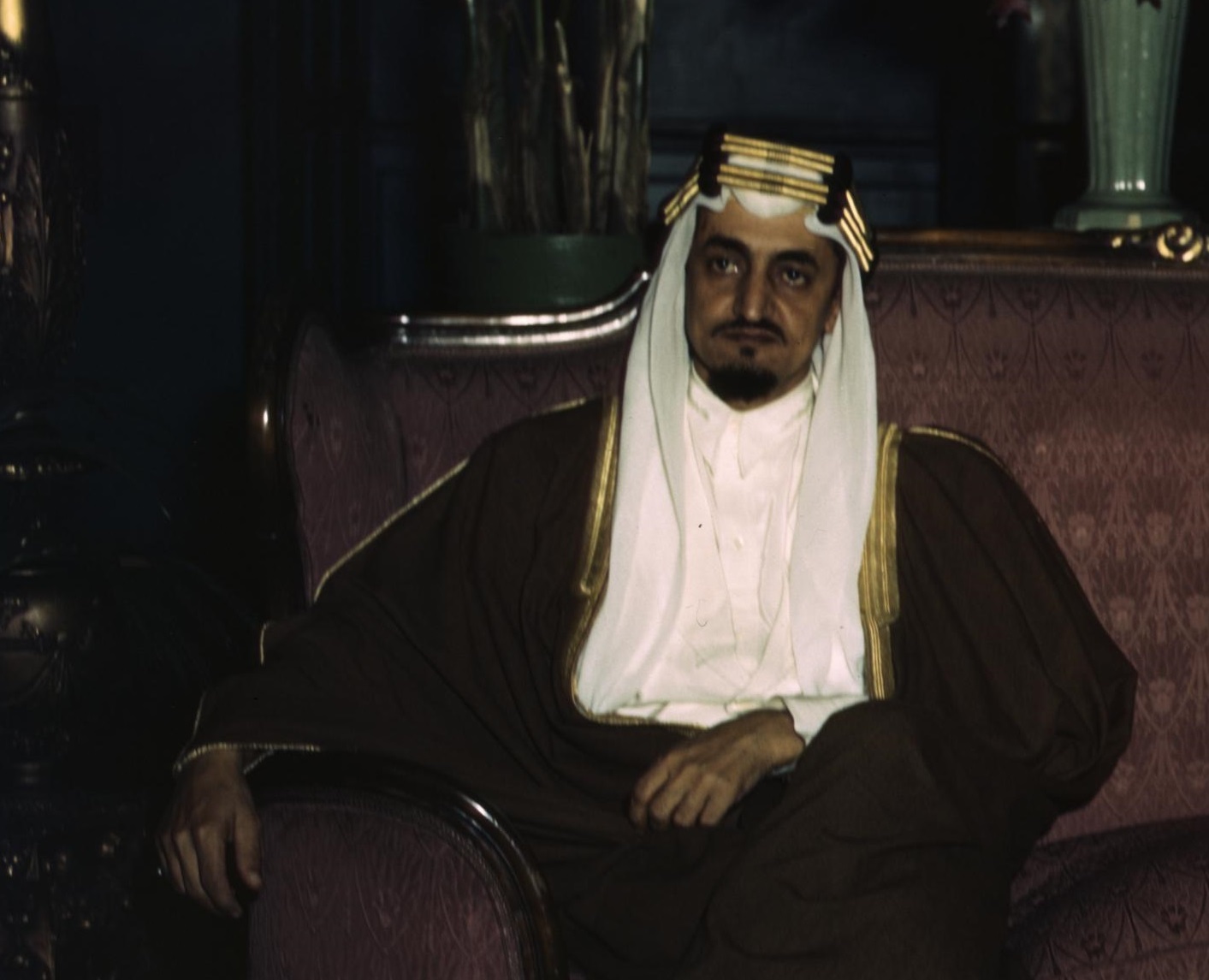
The U.S. encounter with Saudi Arabia began, appropriately, with oil —specifically American oil companies’ interest in exploiting the enormous reserves of oil they believed where under the sand in the kingdom. They began exploring for oil in the late 1930s. Ibn Saud was eager for the revenue oil could bring and eager to have Americans do the work rather than Europeans. He rightly suspected that if he turned to a British or Italian oil company, the kingdom would quickly be another imperial possession of a European empire. The Americans were too far away to harbor imperialist ambitions in the Middle East. The first oil was found in 1938, exactly 80 years ago.
The war came to Saudi Arabia on October 19, 1940 by accident. Italy and Great Britain were fighting in East and North Africa. The Italians decided to strike the British oil installations in Bahrain. Four Italian Air Force Savoia-Marchetti SM-82 long-range bombers took off from the Italian colony of Rhodes to strike the British oil refinery in Bahrain. One of the bombers mistakenly bombed the American oil installation in Dhahran, Saudi Arabia, inflicting minor damage. The bombers then flew to Italian bases in East Africa. Rome apologized to the kingdom but the Americans evacuated their families from Dhahran and closed down some of their work.
FDR became interested in the kingdom because of oil as well. The Second World War burned oil at a prodigious rate. The president wanted to ensure American access to as much as possible. In February 1943, Secretary of the Interior Harold Ickes told the president that his department believed the Saudi oil deposits were the richest in the world. Less than a week later, Roosevelt announced that Saudi Arabia was “vital to the defense of the United States” and was eligible to receive Lend Lease aid like other nations fighting the war, even though Saudi Arabia was actually a neutral. The president also invited Ibn Saud to visit Washington or to send a delegation to represent himself. The king chose Faysal and his younger brother Prince Khaled.
Faysal was a favorite of his father. Born in 1906 in Riyadh, his mother was Tarfah bint al Shaykh, a descendant of Muhammad Ibn Abd al Wahhab—the founder of the kingdom’s unique form of Islam. The young boy was Ibn Saud’s third son and the only one born of this marriage. His mother died in 1912 and he was raised in the al Shaykh family, anchoring him in the country’s religious clerical establishment. At 12 he was sent to London to represent Saudi interests as the First World War ended and the allies divided up the Ottoman Empire. He toured the United Kingdom, Belgium, and France, visiting the battlefields of Flanders. He climbed the Eiffel Tower. He traveled again to Europe in 1926 after his father had conquered the holy cities of Mecca and Medina to secure European recognition of Saudi control of them. In 1932 he traveled to Italy, Switzerland, France, Britain, Holland, Germany, Poland, and Russia. In the Union of Soviet Socialist Republics, Faysal met with senior Soviet officials who opened a consulate in Jeddah as a result. On the way home, the prince visited Turkey, Iran, Iraq, and Kuwait. It was no surprise that his father selected him to travel to America, he was by far the most traveled member of the House of Saud.
He was by far the most traveled member of the House of Saud.
Faysal and Khaled were accompanied by several advisors and their personal bodyguards. They flew to Khartoum, then on to Accra, Ascension Island, Brazil, and finally to Miami. The White House sent a team to greet them in Miami in the last week of September 1943. In Washington, they stayed at Blair House, the official guest residence for the president’s most important visitors. In protocol terms, the visit was a state occasion.
FDR received the delegation in the Oval Office for a private discussion, and Secretary of State Cordell Hull joined the meeting. The president hosted a dinner party for the princes with 40 guests, including Vice President Henry Wallace and several congressmen. Faysal gave the president a gem encrusted sword. The president had a second meeting with the princes on November 9, 1943. The key agreement reached at the summit was to begin construction work for an American air force base in Dhahran, Saudi Arabia, which would be the first American military installation in the Middle East. After two years of construction, the base opened in 1946. It would be used by American airmen on and off for the next 50 years until a pro-Iranian Saudi Shiite terrorist group attacked it with a truck bomb. After the Khobar Towers attack in 1996, the United States Air Force shifted operations to a remote air base in the desert named Prince Sultan Air Base. The air force left Prince Sultan Air Base in 2003.
After the Washington meetings, Faysal and his entourage set off on a trip across America at the president’s request to see the United States at war. First they spent a week in New York and visited Wall Street and the Empire State Building; a side trip took them to Princeton University; and then they went by train via Texas to California for a week each in Los Angeles and San Francisco. They visited Hollywood and Sequoia National Park and the Grand Canyon in Arizona. Side trips took them to Colorado and New Mexico. On the return east they stopped in Denver and Detroit. Back in Washington they visited the U.S. Naval Academy in Annapolis and Baltimore. Faysal called once again on FDR in Washington before departing by air via New York and Bermuda to London.
The British were also eager hosts. The royal delegation stayed at the Dorchester Hotel. They toured the city of London to see the damage done by the German blitz; they were even briefly caught in a German air raid. King George VI received them at Buckingham Palace. The princes returned home, stopping in Gibraltar, Algiers, and Cairo. In Algeria, they meet with Charles de Gaulle.
 All together, the trip lasted three months. The American stops impressed Faysal the most. He returned home to tell his father that America was far stronger than any other nation, including Great Britain, and would dominate the world stage once the war ended. No doubt that is the message FDR had wanted Faysal to take home. Two years later on February 14, 1945, the president met face to face with Ibn Saud on the deck of an American cruiser, the USS Quincy, in the Great Bitter Lake on the Suez Canal. Saudi Arabia declared war on Germany and Japan after the meeting, becoming a member of the United Nations. The meeting on the Quincy was the first direct encounter between an American president and a Saudi King.
All together, the trip lasted three months. The American stops impressed Faysal the most. He returned home to tell his father that America was far stronger than any other nation, including Great Britain, and would dominate the world stage once the war ended. No doubt that is the message FDR had wanted Faysal to take home. Two years later on February 14, 1945, the president met face to face with Ibn Saud on the deck of an American cruiser, the USS Quincy, in the Great Bitter Lake on the Suez Canal. Saudi Arabia declared war on Germany and Japan after the meeting, becoming a member of the United Nations. The meeting on the Quincy was the first direct encounter between an American president and a Saudi King.
As king, Faysal had a complicated relationship with the United States. With strong support from President John F. Kennedy, Faysal sought to modernize and reform the kingdom in 1963 by abolishing slavery and opening education for women. Later, he cut off oil exports to the United States during the 1973 Arab Israeli war because of Richard Nixon’s resupply of Israel. The Saudi-American relationship has its highs and lows, a complicated and fluid quality likely to continue long after Crown Prince Muhammad bin Salman’s visit.
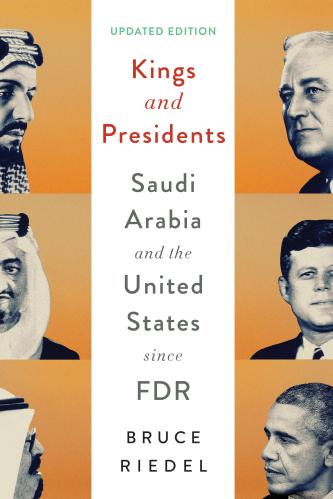
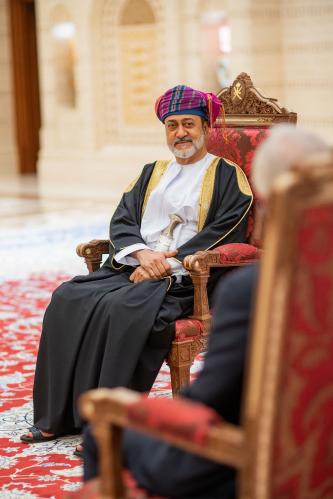
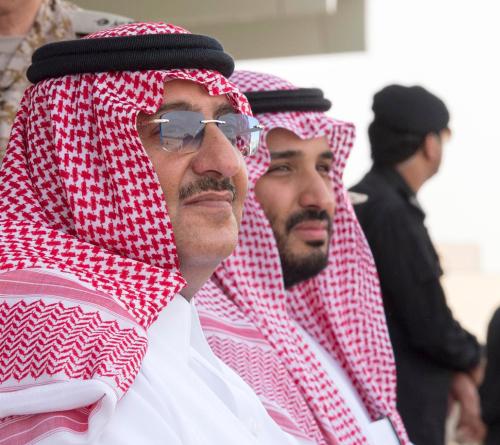
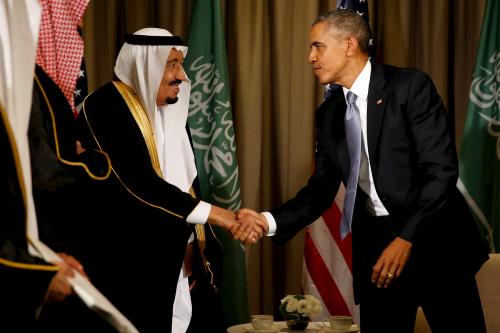
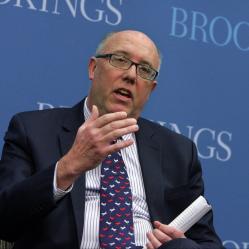

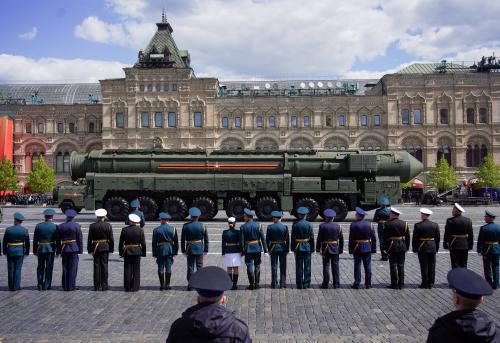
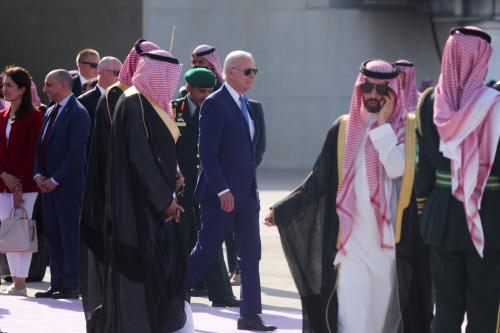
Commentary
Muhammad bin Salman’s U.S. visit marks 75 years of U.S.-Saudi ties
March 12, 2018